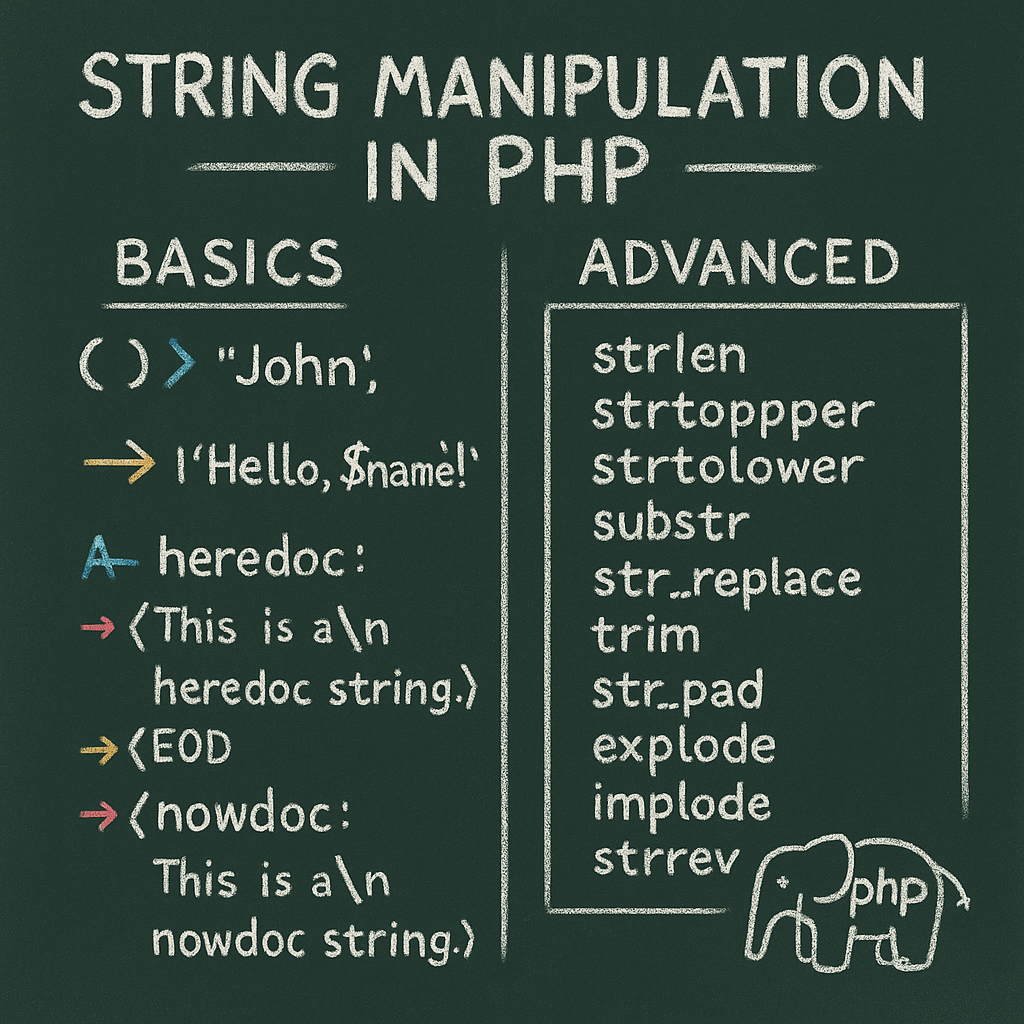PHP is a popular programming language used for web development, and string manipulation is a crucial part of any web application. In this article, we’ll explore the basics of PHP strings and some of the advanced string manipulation techniques.
Table of Contents
What is a PHP String?
A string is a sequence of characters, and in PHP, it is defined as a series of characters enclosed within quotes. PHP supports three types of quotes: single quotes (”), double quotes (“”), and heredoc (<<<) and nowdoc (<<<‘) syntax.
// String examples
$name = 'John';
$message = "Hello, $name!";
$heredoc = <<<EOD
This is a heredoc string.
It can span multiple lines.
EOD;
$nowdoc = <<<'EOD'
This is a nowdoc string.
It also supports multiple lines,
but doesn't parse variables.
EOD;In the example above, we define several strings using different types of quotes. The $name and $message strings use double quotes to allow variable interpolation. The $heredoc and $nowdoc strings are multi-line strings that allow the use of quotes and other special characters without escaping them.
Basic String Manipulation
PHP offers many built-in functions for manipulating strings. Here are some of the most commonly used functions:
// String manipulation functions
$hello = "Hello, world!";
$length = strlen($hello); // returns 13
$upper = strtoupper($hello); // returns "HELLO, WORLD!"
$lower = strtolower($hello); // returns "hello, world!"
$substring = substr($hello, 0, 5); // returns "Hello"
$replace = str_replace("world", "PHP", $hello); // returns "Hello, PHP!"In the example above, we use the strlen function to get the length of a string. We also use the strtoupper and strtolower functions to convert a string to uppercase or lowercase, respectively. The substr function is used to extract a substring from a string, and the str_replace function is used to replace a substring with another substring.
Advanced String Manipulation
PHP also provides many advanced string manipulation functions for more complex operations. Here are some examples:
// Advanced string manipulation functions
$hello = " Hello, world! ";
$trimmed = trim($hello); // returns "Hello, world!"
$padded = str_pad($hello, 20, "-"); // returns "---Hello, world!----"
$words = explode(",", $hello); // returns ["Hello", " world!"]
$joined = implode("-", $words); // returns "Hello- world!"
$reversed = strrev($hello); // returns "!dlrow ,olleH "In the example above, we use the trim function to remove leading and trailing whitespace from a string. The str_pad function is used to pad a string with a specified character to a specific length. The explode function is used to split a string into an array based on a delimiter, and the implode function is used to join an array of strings with a specified delimiter. Finally, the strrev function is used to reverse a string.
Conclusion
PHP strings are an essential part of any web application, and understanding how to manipulate them is crucial for building effective and efficient applications. In this article, we covered the basics of PHP strings and some advanced string manipulation techniques, including string functions for basic and advanced manipulation, and special string syntax like heredoc and nowdoc. By mastering these techniques, you can write more efficient and powerful PHP code for your web applications.

Leave a Reply